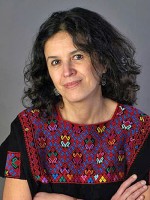Title

Alejandro Iglesias-Rossi
(Photo by Fronteras del Silencio)When Carnegie Hall invited the New Juilliard Ensemble to be part of its 2012 Voices From Latin America festival—the concert takes place at Alice Tully Hall on November 9—I happily agreed. The cause is excellent, but creating even a single Latin American concert is not necessarily easy, as I had learned in 1993, when the Museum of Modern Art engaged me to direct its Summergarden series, that year a festival of Latin American concert music. Having performed a lot of Latin American music, but largely by extraordinarily gifted composers who had emigrated to the United States, I looked forward to the topic but didn’t anticipate the difficulty of finding appropriate composers. Much of the region was emerging from violent dictatorships that had driven independent thinkers to flee, there were no regional music information centers to turn to for names, and Internet searching was mostly in the future. I realized that word-of-mouth was the best source though it could be tainted by political score-settling, which wasn’t uniquely Latin American, of course, but it did make it more challenging. In the end, however, that summer’s nine programs displayed both extraordinary quality and a huge range of styles.
Body
While today’s Latin America is incredibly different from the troubled region of those days, the old stylistic divides have not vanished. Classicmodernism, which has tapered off in much of the world, still plays a big role in Latin America, and music based on folkloric and national materials is often frowned upon in the most progressive circles. But the Internet has made communication much easier, and greatly improved composers’ ability to make their music accessible. Knowing whom to seek out remains a challenge, however. Fortunately, my years of organizing, playing, conducting, and performing at festivals around the world have helped me build a network of contacts who inspire confidence that they will make suggestions based on quality rather than dogma. Of course, there were limitations. I was looking for pieces using N.J.E.’s “single-everything” scoring. Music for that instrumentation (i.e., one instrument per part) is relatively rare in the Americas in comparison with Europe, where the proliferation of such ensembles has led to a large repertory. I also wanted to have a reasonable geographical distribution, though the region is so big that full representation would be impossible.
To my great pleasure, I ended up with much more wonderful music than I could use. After much agonizing, I selected six compositions from five countries. Although I wanted to perform only music by composers who currently live in Latin America, I ended up including Hilda Paredes, who, it turned out, had settled in London many years ago though she is still active in Mexico. I was pleasantly surprised to see how many composers have had some education in the U.S. or Europe, which has broadened their exposure to music not generally performed in their home countries. Although I was most interested in finding new pieces, I ended up deciding to include two compositions that were written for and already premiered by N.J.E. They are Argentinean Alejandro Iglesias-Rossi’s 1997 Ritual, an eerie vocal piece sung in the Andean Quechua language, and Paul Desenne’s 2004 Sinfonia Burocratica ed’Amazzonica, a wonderful sonic portrayal of the urban and jungle cultures between which he divides his life. Desenne offers a healthy reminder that what we think of as Latin American indigenous music is often Afro-Latino. Mexicans Paredes and Hebert Vázquez are stylistically extremely distinct; her music in some ways shows her intense exposure to European new music through a life divided between London and Mexico. The vivid contrasts of Vázquez’s 2009 Retrato de Guillermina en Rojo (Portrait of Guillermina in Red) reflect the piece’s dedication to a famous Mexican dancer (Guillermina Bravo) known for the range of her performing skills. Brazilian composer Sergio Kafejian is another composer with extensive European experience, especially in electronic music. His Sobre Paranambucae, for acoustic players, is constructed from computer analysis of soundscapes from West Central Brazil. Although the processing of frog lagoons and other natural sounds has removed any programmatic or narrative content from his piece, one still can detect the good “natural” humor behind it in its vivid contrasts. Finally, I am indebted to Cuban-American composer Tania Léon for putting me in touch with Cuban conductor and composer Guido López-Gavilán, whose music is far too little known in the United States.





